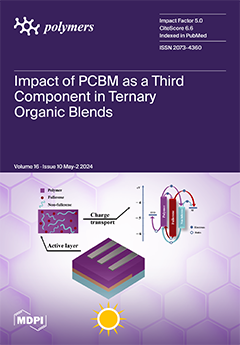In a solid-state dye-sensitized solar cell, a fast-ion conducting (σ
25°C > 10
−4 S cm
−1) solid redox mediator (SRM; electrolyte) helps in fast dye regeneration and back-electron transfer inhibition. In this work, we synthesized solid Co
2+/3+ redox mediators using a [(1 −
x)succinonitrile:
x poly(ethylene oxide)] matrix, LiX, Co(tris-2,2′-bipyridine)
3(bis(trifluoromethyl) sulfonylimide)
2, and Co(tris-2,2′-bipyridine)
3(bis(trifluoromethyl) sulfonylimide)
3 via the solution-cast method, and the results were compared with those of their acetonitrile-based liquid counterparts. The notation
x is a weight fraction (=0, 0.5, and 1), and X represents an anion. The anion was either bis(trifluoromethyl) sulfonylimide [TFSI
−; ionic size, 0.79 nm] or trifluoromethanesulfonate [Triflate
−; ionic size, 0.44 nm]. The delocalized electrons and a low value of lattice energy for the anions made the lithium salts highly dissociable in the matrix. The electrolytes exhibited σ
25°C ≈ 2.1 × 10
−3 (1.5 × 10
−3), 7.2 × 10
−4 (3.1 × 10
−4), and 9.7 × 10
−7 (6.3 × 10
−7) S cm
−1 for
x = 0, 0.5, and 1, respectively, with X = TFSI
− (Triflate
−) ions. The log σ–
T−1 plot portrayed a linear curve for
x = 0 and 1, and a downward curve for
x = 0.5. The electrical transport study showed σ(TFSI
−) > σ(Triflate
−), with lower activation energy for TFSI
− ions. The anionic effect increased from
x = 0 to 1. This effect was explained using conventional techniques, such as Fourier transform infrared spectroscopy (FT-IR), X-ray diffractometry (XRD), X-ray photoelectron spectroscopy (XPS), scanning electron microscopy (SEM), UV–visible spectroscopy (UV-vis), differential scanning calorimetry (DSC), and thermogravimetric analysis (TGA).
Full article


